 Oreo Cookies Lower LDL Cholesterol Better than Statin Drugs
Oreo Cookies Lower LDL Cholesterol Better than Statin Drugs
There is a new study that found that eating Oreo cookies can lower LDL cholesterol better than high-intensity statin drugs. Can this be true? Today, I want to discuss this study and its results.
Now, before we get into this, it’s important to clarify that I’m not recommending eating Oreo cookies. Just like similar processed sweet cookies, Oreo cookies are high in refined sugar, high in chemicals, high in damaged fats, and can drive up inflammation. They are simply not good for your body, and like other processed foods, they can increase your risk of various health issues.
However, this study is interesting and can open up an important conversation about cholesterol and statin drugs. So, I find it important that we discuss it in more detail.
In this article, I will explain what being a lean mass hyper-responder means. I will go over this recent Oreo cookie study in detail. I will explain the results of the study and the potential effects of Oreo cookies on LDL cholesterols. I will go over the Lipid Energy Model Hypothesis.
I will discuss the problems with the current cholesterol paradigm. I will explain the difference between Pattern A and Pattern B lipoprotein cholesterol. You will understand the potential side effects of statin drugs. I will discuss why statin drugs never address the root cause issues. Finally, I will direct you to some resources to improve your cholesterol levels.
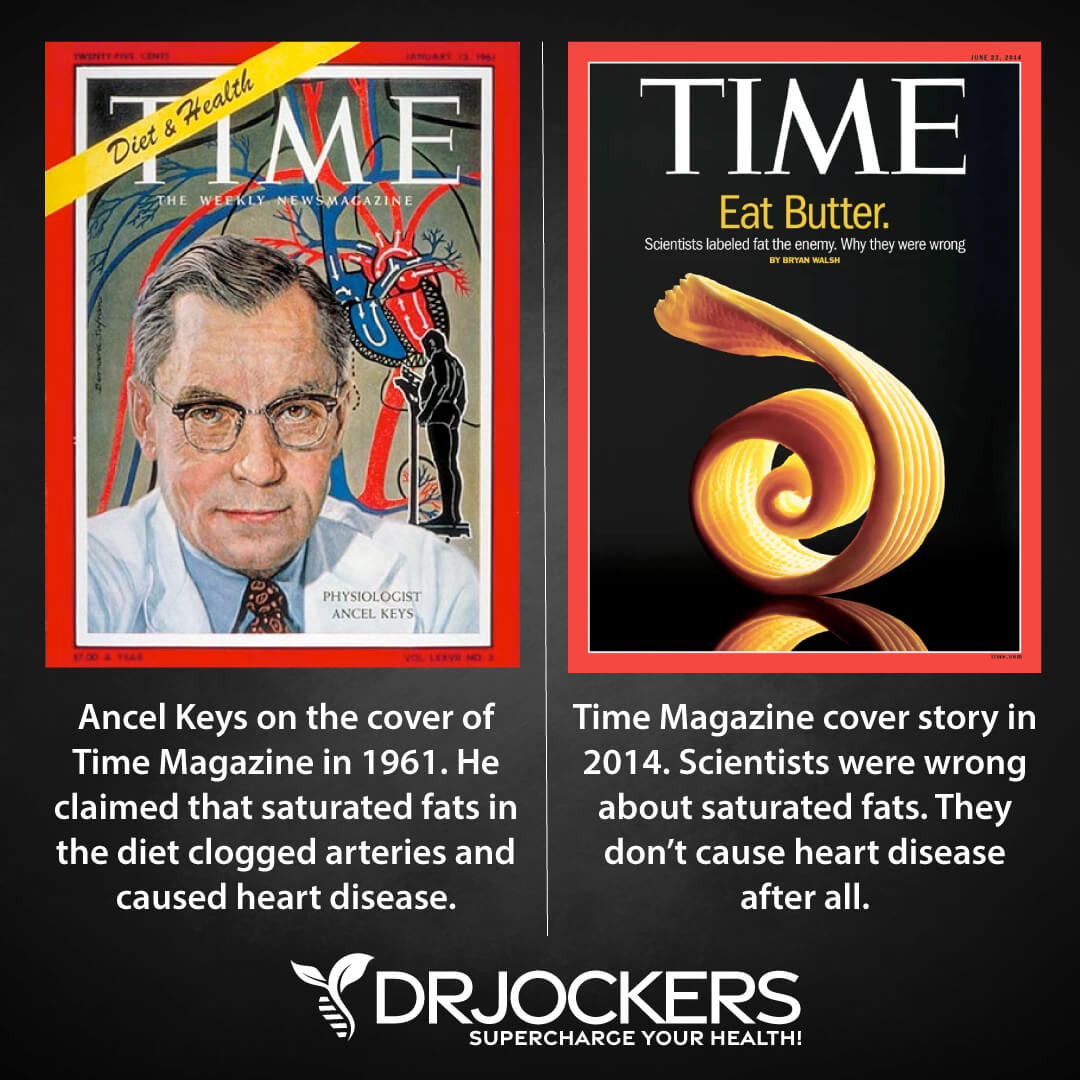
What is Cholesterol?
Let’s talk about cholesterol first for a moment. Cholesterol is a type of lipid. It is a waxy substance found in your blood. It is necessary for building healthy cells. Cholesterol is made by the liver and also comes from animal food products.
There are several types of lipids in your body, all used as a source of energy. They include cholesterol, triglycerides, high-density lipoprotein (HDL), low-density lipoprotein (LDL), and very low-density lipoprotein (VLDL). Healthy cholesterol is critical for many areas of your health.
Cholesterols serve as a structural element for various tissues, including your brain and nervous system. They help to transport fat-soluble minerals into your cells.
They serve as building blocks for hormones, including estrogen, progesterone, testosterone, cortisol, and vitamin D. They also help to make bile acids to support the digestion of fats.
Let’s look at the subtypes of cholesterol and lipids briefly. LDL helps to transport fat-soluble nutrients and saturated fat into cell membranes. It is often referred to as “bad” cholesterol; however, there is more to this story.
There are different types of LDL cholesterol, depending on their size. Pattern A LDL is a larger particle size that can carry more fat-soluble nutrients and may actually offer antioxidant and cardioprotective benefits. Pattern B has a small particle size.
It’s prone to oxidation, and it is associated with higher fasting insulin, higher HbA1C levels, and higher cardiovascular risk factors. The ideal range of LDL cholesterol is between 100 and 200 mg/dL. HDL cholesterol is commonly referred to as the “good” cholesterol. It helps to clean up LDL particulates and move them to the liver for recycling.
It helps to reduce inflammation and heart disease. The ideal range is 55 to 80 mg/dL. Triglycerides are a type of lipid that helps to supply your body with energy.
At high levels, they may increase the risk of heart disease and stroke. Ideal levels are 40 to 80 mg/dL. VLDL is similar to LDL, but it helps to move out triglycerides. The ideal range is 5 to 30 mg/dL.
However, we can’t look at lipid levels in isolation only. We have to consider their ratios. You need a balanced LDL to HDL, and triglycerides to HDL ratio is essential for good health.
The normal LDL: HDL ratio is 3:1 or less, 2:1 being optimal, and the normal triglycerides: HDL ratio is 2:1 or less, 1:11 being optimal. Triglyceride: HDL Ratio: 2:1 or less (1:1 is optimal). I wrote more about the importance of these ratios here in this article; however, it was important to understand these concepts before getting into the topic of lean mass hyper-responders.
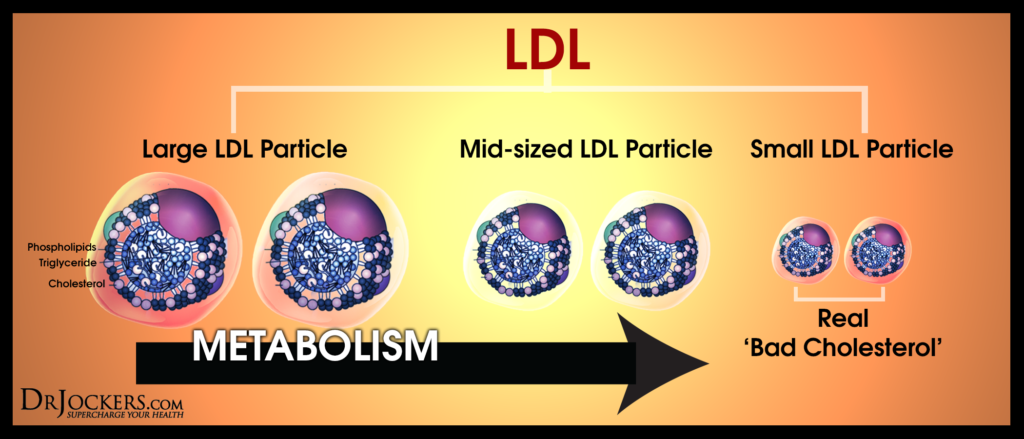
What are Lean Mass Hyper-Responders?
So, what are lean mass hyper-responders? According to a 2024 case study published in Clinical Case Reports, the term lean mass hyper-responder (LMHR) refers to a phenotype that experiences high LDL cholesterol levels when significantly reducing carbohydrates in their diet and replacing them with fat (1). Essentially, we are talking about a low-carb, high-fat diet, just like the ketogenic diet, which leads to high LDL levels in them.
According to the study, lean mass hyper-responders tend to have a lean physique with a very low body mass index (BMI). They are very lean with usually a good amount of muscle tissue. They tend to have high LDL levels, high HDL levels, and low triglyceride levels with a high-fat, low-carb diet.
What happens to this group is when they go on a low-carb diet, their LDL or “bad” cholesterol goes up, their triglycerides go down to typically below 70 or less, and their HDL or ‘good’ cholesterol goes up to typically 80 or more. So, despite a higher LDL, their triglyceride to HDL is typically 1 or less, which is actually a sign of being a very healthy and insulin sensitive individual.
However, despite this great triglyceride to HDL ratio, their LDL cholesterol is high. In their labs, they look metabolically healthy in all accounts, yet their LDL levels are skyrocketing. These levels would make most cardiologists very concerned and would want to put patients on statin drugs for high cholesterol immediately.

Lean Mass Hyper Responder Case Study:
However, this may not be necessary. According to this 2024 case study on a 47-year-old man who is a lean mass hyper-responder, his cholesterol levels improved with diet alone, and without medication (1). Remember, only high LDL levels were high. His lipid ratios were fine, so he did not meet the definition of lipid issues. But looking at it in isolation, his LDL levels were alarming.
The subject changed his diet for the experiment. They kept his macronutrient ratios. But they changed his fat intake to unsaturated fatty acids, including fish, chicken breast fillets, and vegetable fats.
This didn’t make a difference, so they modified his macros slightly to 42% carbs, 33% fat, and 25% protein in his daily calorie intake. This slight increase in carbs led to the normalization of LDL cholesterol. The important takeaway here is that we can’t look at LDL levels only; we have to look at the full picture, and a simple dietary change can often create a major shift in normalizing cholesterol levels.
A 2022 editorial published in the Journal of Clinical Lipidology also discussed the issue of lean mass hyper-responders (2). The authors discussed that individuals who are lean mass hyper-responders only experience high LDL cholesterol when going on a carbohydrate-restricted diet.
Their markers don’t fit into a diagnosis, such as familial hypercholesterolemia. Their LDL cholesterol levels tend to improve when carbohydrates are reintroduced or increased.
They recommend that those who experience high LDL cholesterol levels on a ketogenic diet should consider a dietary and lifestyle change to improve their markers. The authors also noted that we need more research to understand cholesterol and potential health risks in lean mass hyper-responders.
Oreo Cookies Study Details
Today, we are talking about a 2024 study published in Metabolites (3). The study was published by Nicholas G. Norwitz and William C Cromwell, Cromwell being one of the leading scientists in lipid research.
The study found that eating Oreo cookies may help to lower LDL cholesterol better than statin drugs. The study specifically looked at lean mass hyper-responders, who are on a low-carb, high-fat diet but still have high LDL cholesterol levels.
Interestingly, Norwitz is one of these lean mass hyper-responders. What he did was test his LDL cholesterol before the study, while he was on a high-fat, low-carb ketogenic diet. His levels were at 384 mg/dL, which is very high. In most cases, this would alarm doctors, and like many in his situation, he was also offered statin medication by his doctor. For this study, he actually took statin drugs for a while.
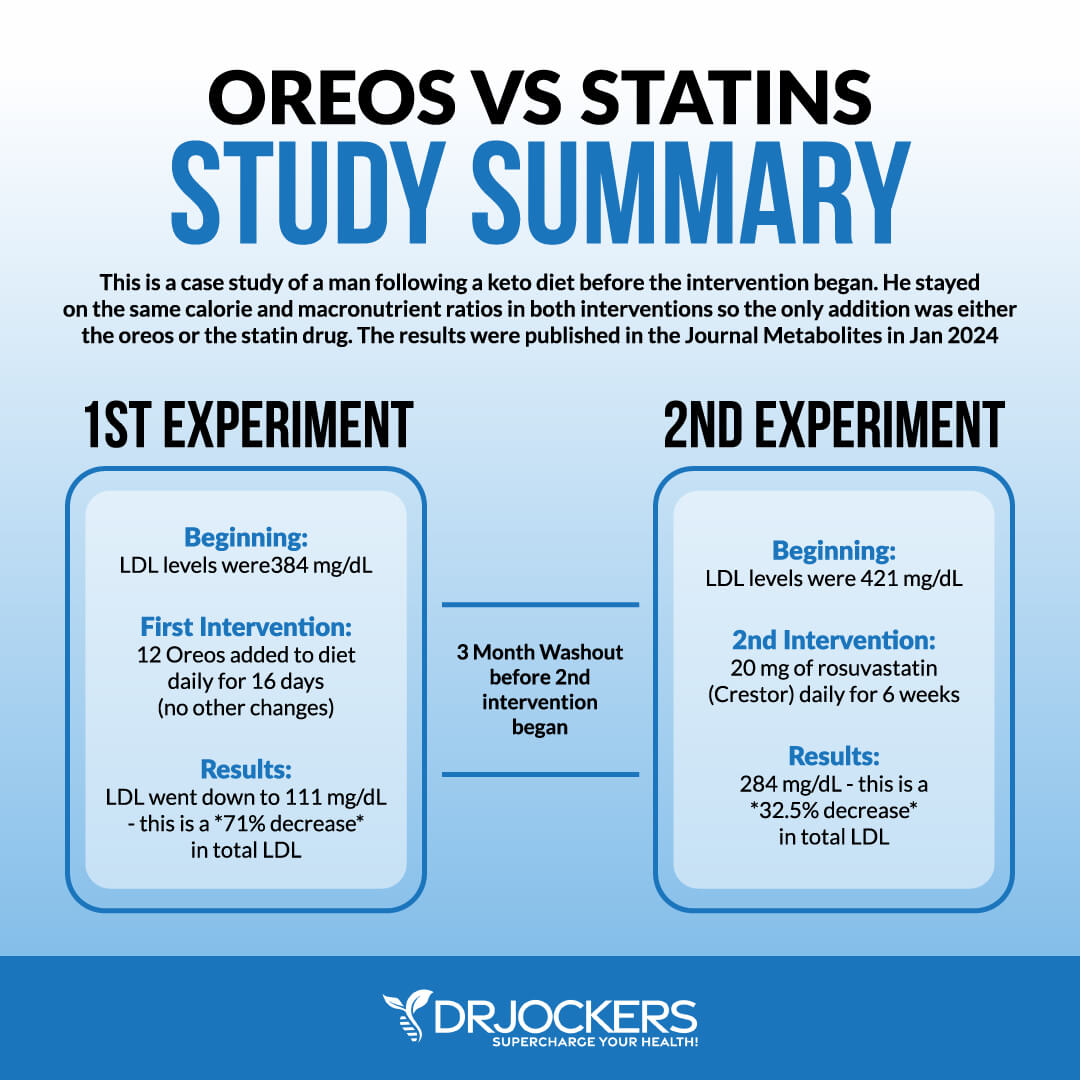
Oreo Cookie Study Results
So, let’s look at what he did. After 2 weeks on a ketogenic diet, he first did 16 days of Oreo cookies. He did not change his diet at all, besides adding 12 regular Oreo cookies to his diet for a total of 16 days. This meant 100 additional grams of carbohydrates per day for 16 days. By the end of these 16 days, his LDL cholesterol dropped to 111 mg/dL from 384 mg/dL. This is a 72 percent reduction just by adding Oreos.
After that, he did a 3-month wash-out period. This meant eating his regular ketogenic diet, no Oreo cookies or other added carbs this time. Then he retested his LDL cholesterol, which was 421 mg/dL this time, even higher than earlier.
This was followed by a regimen of taking a cholesterol-lowering medication, specifically 20 mg of Rosuvastatin. This medication reduced his cholesterol to 232 mg/dL. This is a 32 percent reduction that happened after about a month.
The results show that adding 12 Oreo cookies per day for 16 days lowered his LDL cholesterol significantly more than taking high doses of statin drugs designed for high cholesterol. So, what does this tell us? This shows us that in individuals who are metabolically fit, looking at overall LDL cholesterol is not the best way to measure health.
In fact, in metabolically fit people, high LDL cholesterol levels are common when eating a high-fat, low-carb diet. The Lipid Energy Model Hypothesis explains why this may happen.
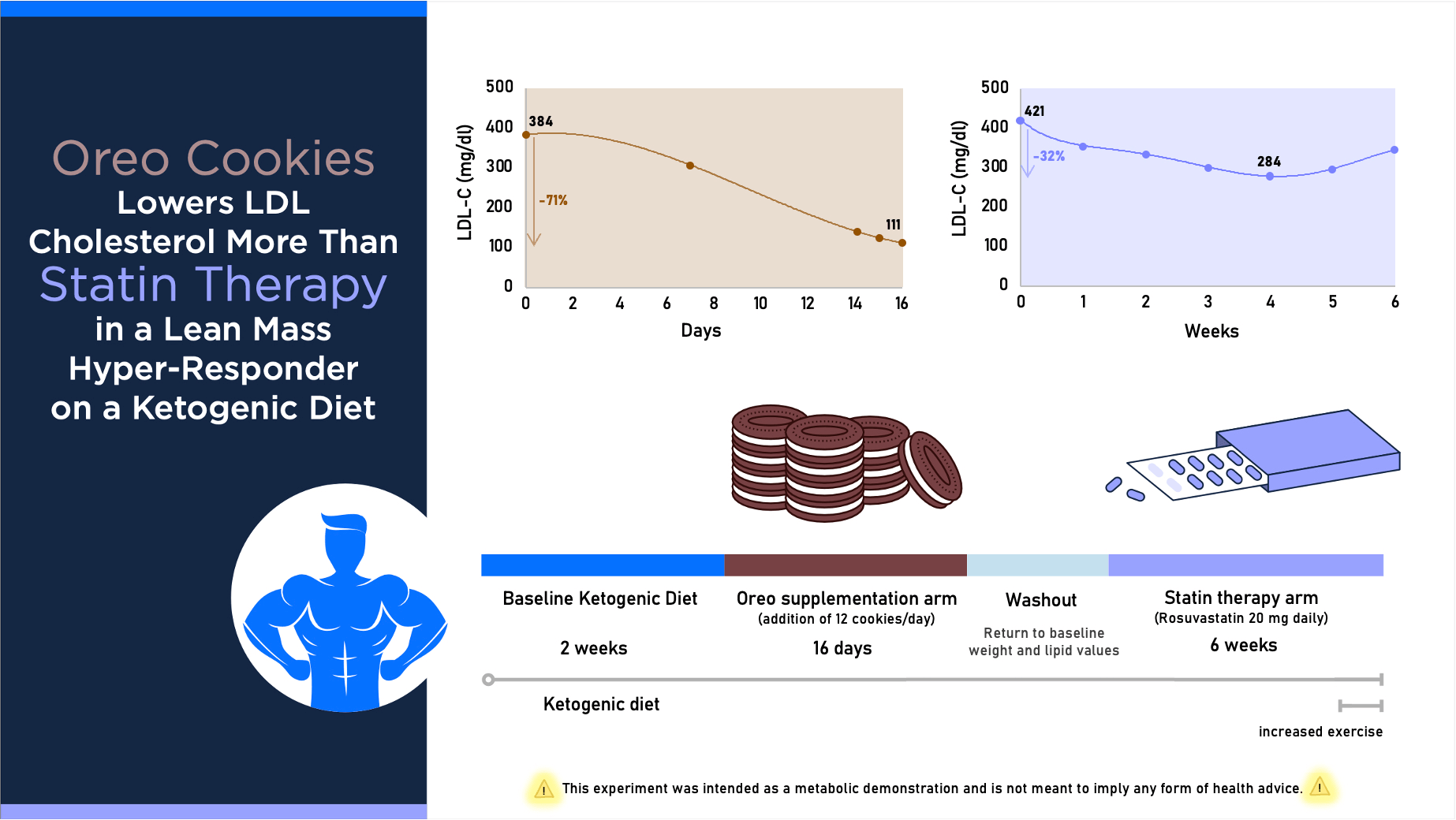
What is the Lipid Energy Model?
A 2022 discussion published in Metabolites explains the Lipid Energy Model Hypothesis well (4). The Lipid Energy Model Hypothesis explains why some lean and healthy people, specifically lean mass hyper-responders, develop high LDL cholesterol when increasing their use of fat as an energy source by going on a high-fat, low-carbohydrate diet. This model has been really well discussed on the great website Cholesterol Code.
This happens because their body is trying to shunt around fatty acids and uses them for energy, restructuring cell membranes. Through a high-fat, low-carb diet, they purposefully develop an increased dependence on fat as a source of energy.
Metabolic substrates help to produce energy and synthesize larger molecules. When fat is the main metabolic substrate, it can lead to an increase in hepatic secretion and peripheral uptake of triglycerides. When triglycerides get used up, very low-density lipoproteins are turned into low-density lipoproteins. This can lead to a significant elevation of both LDL and HDL cholesterol, combined with a reduction of triglycerides.
Basically, as people are getting better at burning fat for fuel and becoming more metabolically flexible due to a low-carb, high-fat versus a more mixed or high-carb diet, their LDL cholesterol levels may go up when their body is shunting things around to burn fat better for fuel. The problem, however, is that our current cholesterol paradigm often not look at the full picture.

Problems with the Current Cholesterol Paradigm?
Cardiologists for years have been trained to look at overall LDL cholesterol particles. They are trained that, based on these rates, they should be able to determine cardiovascular risk factors. Based on this, they commonly recommend statin drugs to reduce LDL levels to prevent cardiovascular risk factors.
But what this study and the Lipid Energy Model Hypothesis are showing us is that looking at only the overall LDL cholesterol levels is not enough. We need to look at fasting insulin levels, overall markers of oxidative stress, and overall markers of inflammation to get a better picture of one’s arterial and cardiovascular health.
We need to look at LDL to HDL and triglycerides to HDL. And of course, we need to look at someone’s diet and lifestyle, on how this may fit into the picture.
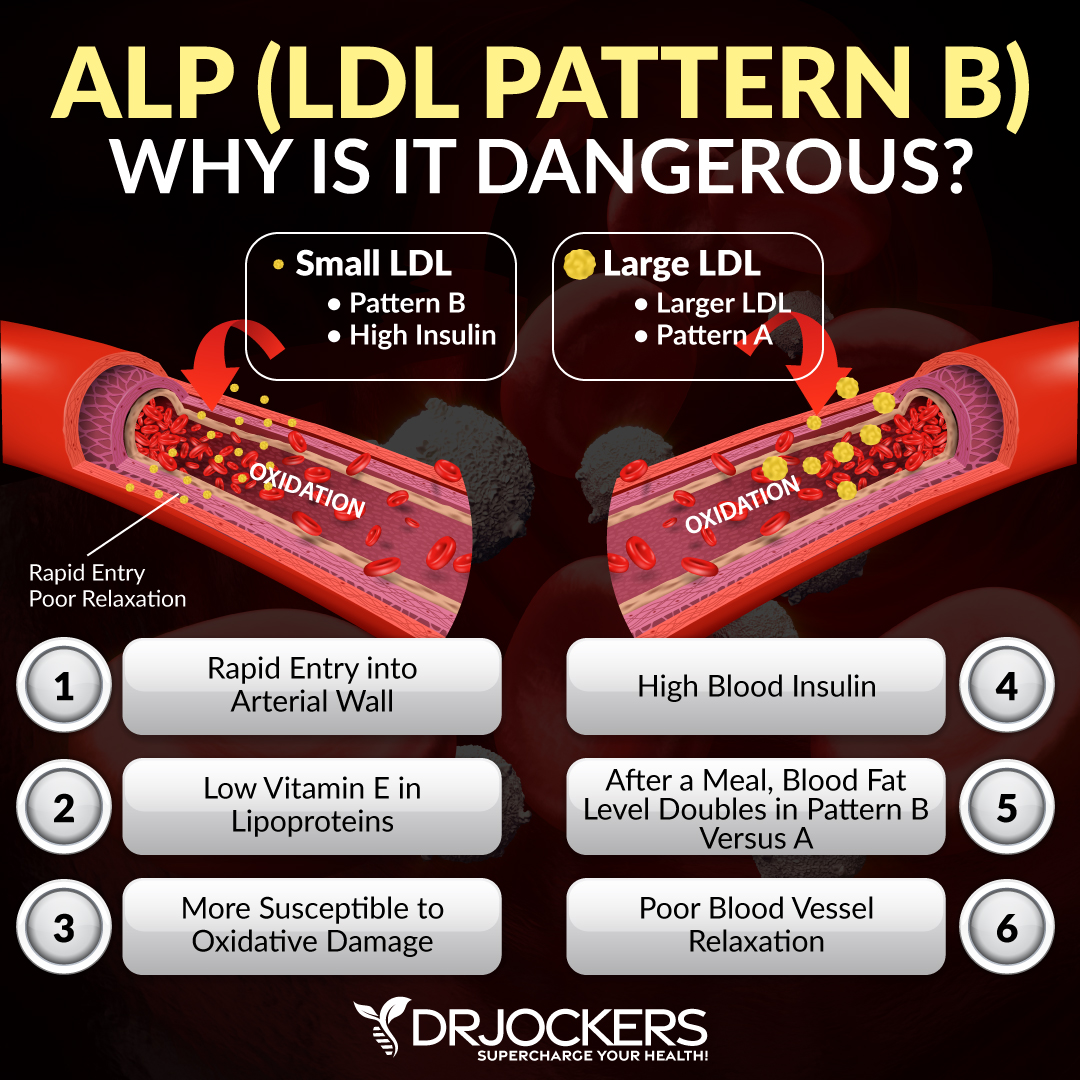
Pattern A vs Pattern B Lipoprotein Cholesterol
As I discussed earlier, declaring that LDL is a “bad” cholesterol is not that simple. There are different types of LDL particles depending on their size. Understanding LDL particle size is critical for determining whether LDL may contribute to heart disease or be protective of heart disease.
Pattern A LDL has a larger particle size. Pattern A LDL tends to carry more fat-soluble nutrients and antioxidants to protect the body from oxidative stress. This also means that Pattern A is more cardioprotective. It is also associated with lower insulin and HbA1C levels. Therefore, high Pattern A LDL levels are not a problem and may even be a good thing.
It’s a different story with Pattern B LDL cholesterol. Pattern B LDL has a smaller particle size and is more prone to oxidation. Pattern B is small enough to enter the endothelial lining of the artery, where it may oxidize to form plaque.
There is a high association between small, dense Pattern B LDL particles and cardiovascular disease. They are linked to higher fasting insulin and HbA1C levels. So high Pattern B LDL levels may pose a serious health risk. LDL particle sizes can be looked at in closer detail in the NMR test to look at your true risk of metabolic and cardiovascular disease.
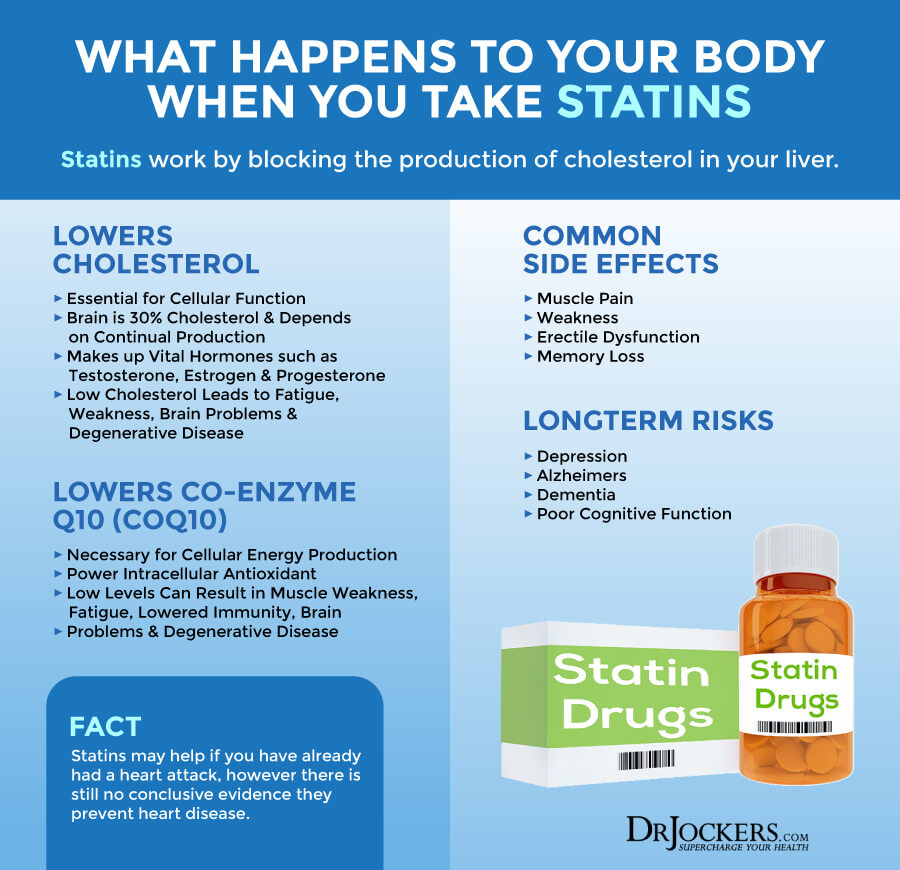
Statin Drug Side Effects
Statin drugs are some of the most commonly prescribed medications. They are commonly prescribed to lower your bad cholesterol levels and supposedly reduce your risk of cardiovascular disease, heart attacks, and stroke. Not only did they overprescribe, but they also came with some unwanted side effects and health risks.
Some of the most common side effects of statin drugs include:
- Headaches
- Muscle aches, weakness, or tenderness
- Difficulty sleeping or sleep issues
- Drowsiness
- Dizziness
- Skin flushing
- Rashes
- Acne or other skin issues
- Stomach pain or cramps
- Nausea
- Vomiting
- Gas
- Bloating
- Constipation
- Diarrhea
- Low platelet levels
- High blood sugar levels
Moreover, statin drugs may even increase your risk of diabetes and skin conditions. Though statin drugs are commonly prescribed to reduce your risk of heart attacks and increase the life expectancy of those with pre-existing heart disease, they may increase your risk of other health issues.
According to a 2019 study published in Diabetes Metabolism, statin drugs can double your risk of diabetes (5). Taking statin drugs for 2 years or longer may increase your risks even more.
According to a 2019 study published in the British Journal of Clinical Pharmacology, statin drugs can also increase the risk of staph skin infections by 40 percent (5). These rates are similar in those with and without diabetes, so it seems that these skin infections are not simply complications of diabetes but the side effects of statin drugs.
To learn more about how statin drugs work, their potential side effects, of statin drugs and support strategies to improve your health, I recommend reading this article.
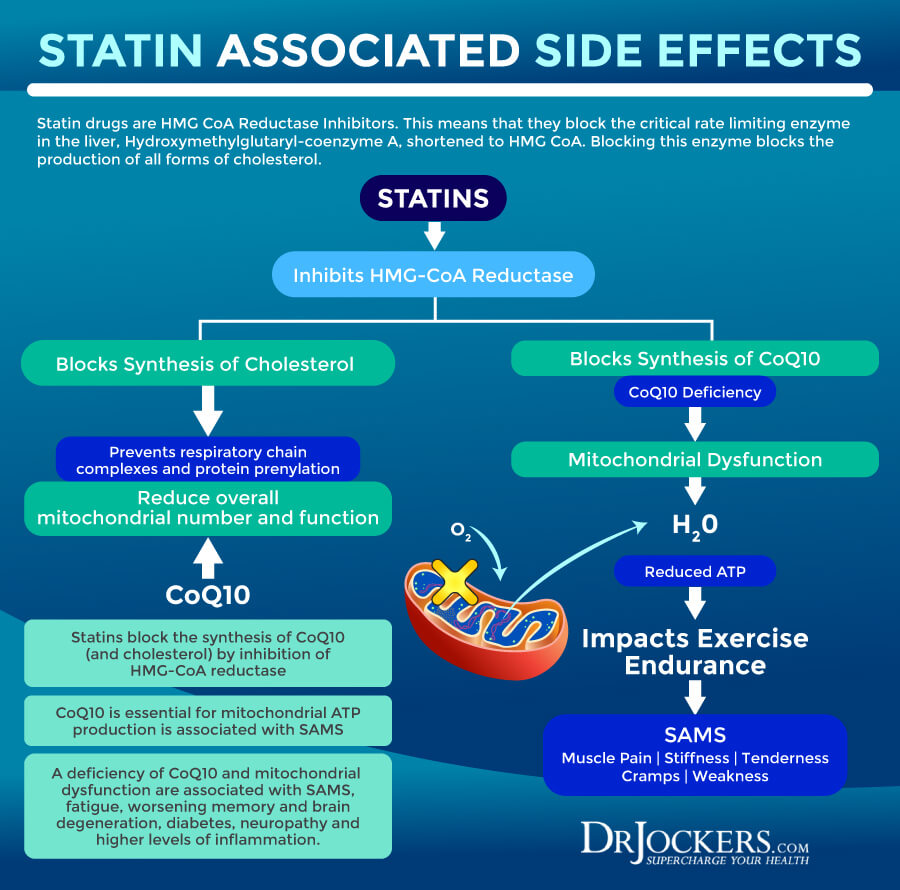
Root Causes of Poor Cholesterol Balance
So why do people develop high cholesterol, poor lipid ratios, and possible related cardiovascular health issues? It doesn’t happen out of nowhere in isolation, but it’s generally due to underlying factors, including dietary factors, lifestyle factors, and underlying health issues.
Factors that may contribute to poor lipid ratios include:
- A pro-inflammatory diet
- Sedentary lifestyle
- Obesity
- Chronic stress
- Insulin resistance
- Hypothyroidism
- Food sensitivities
- Vitamin D deficiency and lack of sunshine exposure
- Poor sleep and sleep apnea
- Sluggish liver and poor bile flow
- Smoking
I discussed each of these potential underlying issues of poor lipid ratios in this article in great detail.

Why Statins Never Address Root Cause Issues
But what does this mean when it comes to statin drugs being used for high LDL cholesterol? Statin drugs are simply designed and prescribed to lower LDL cholesterol levels to reduce cardiovascular risk factors. That’s it. Statin drugs don’t look at and don’t address underlying health issues.
For example, if smoking, poor sleep, and food sensitivities are behind your poor lipid ratios, taking statin drugs may reduce your LDL levels, but it won’t make you quit smoking, it won’t improve your sleep, and it won’t eliminate your food sensitivities. On the other hand, quitting smoking, improving sleep, and eliminating food sensitivities may be enough to improve your lipid ratios and overall health without statin drugs.
Statin medications also don’t address the fact that lean mass hyper responders may develop high LDL levels while keeping their overall lipid ratios and inflammation markers at bay due to a high-fat, low-carb diet. Understanding the full picture and figuring out the root cause of issues should always be the first step.
If there is actually a problem and health risk, addressing underlying issues should be the first step instead of using medications to address symptoms. Statin drugs not only do not address potential root cause factors but also come with side effects and health risks. Medication should be the last resort once we address all underlying factors, improve one’s diet and lifestyle, and add appropriate supplementation or other natural strategies.

What This Oreo Study Should Teach Us?
This study showed that only 12 Oreo cookies a day for 16 days can lower your LDL cholesterol more than statin drugs. This should get your attention. Again, I’m not recommending starting to eat Oreo cookies to improve your LDL cholesterol or for any reason. Oreo cookies are highly processed foods that can negatively affect your health, especially in such quantities. They shouldn’t be part of a healthy diet.
However, if you are on a low-carbohydrate diet and you notice that your LDL levels are very high, but your triglycerides, HDL, fasting insulin, C-reactive protein, and other markers of health are good, don’t get overly concerned. You can also try an experiment before your next round of blood work.
Instead of Oreo cookies or some other processed carbs, pick out your favorite healthy carbs. Fruits and root vegetables are great options. For example, strawberries or potatoes are some nutrient-dense, healthy carb options I love.
So, add more of these healthy carbs to your diet, add about 100 extra grams of carbs to your diet from nutrient-dense sources for 2 weeks, and then see what happens to your LDL. Chances are, your LDL levels will be lower.
In the end, this study just shows that LDL markers are not everything. High LDL, high triglycerides, and low HDL are a terrible triad contributing to poor metabolic health and an increased risk of cardiovascular disease.
However, if we just see high LDL, normal triglyceride and LDL ratios, and high HDL levels, it is usually a sign of good metabolic health, and there is no issue to be further investigated. For further information, I recommend reading this article for more info on strategies to optimize cholesterol levels.
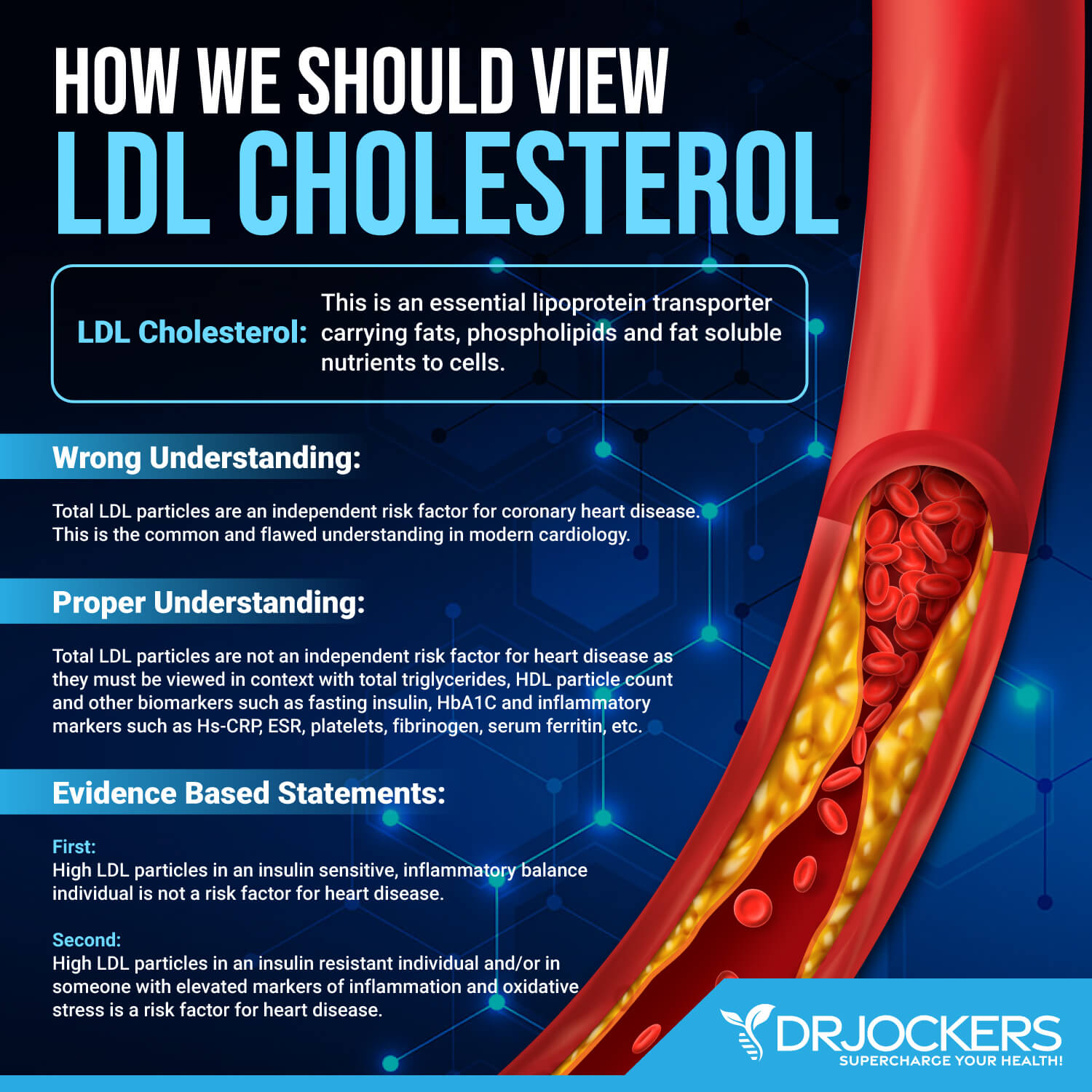
Final Thoughts
Statins are some of the most commonly prescribed medications to improve your bad cholesterol levels and reduce your risk of cardiovascular disease, heart attacks, and stroke. However, they come with side effects and health risks, they don’t address the root cause of your issues, and in many cases, are not necessary.
Looking at LDL cholesterol levels in isolation is not a good idea. We have to look at lipid ratios, inflammation and oxidative stress markers, and insulin levels too.
Lean mass hyper-responders may develop high LDL cholesterol on a high-fat, low-carb ketogenic diet. While their LDL levels may be high, their lipid ratios are fine, they are metabolically flexible and healthy, and have no increased health risks.
Though this study I shared in this article is interesting, if you are a lean mass hyper-responder with high LDL but otherwise good cardiometabolic markers on a high-fat, low-carb diet, I recommend trying to add more nutrient-dense carbs, such as fruits or root veggies to your diet, not Oreo cookies.
Remember to work with a functional medicine doctor who can check all your important markers, not just your LDL levels, look at your diet and lifestyle, dig deeper for potential underlying issues, and offer natural strategies to improve your health and wellness. Use this article and the links to other resources as a guide to keep your lipid levels normal and to enjoy health and vitality.
If you want further help with your health, we offer long-distance functional health coaching programs. For further support with your health goals, just reach out, and our fantastic coaches are here to support your journey.
Inflammation Crushing Ebundle
The Inflammation Crushing Ebundle is designed to help you improve your brain, liver, immune system and discover the healing strategies, foods and recipes to burn fat, reduce inflammation and Thrive in Life!
As a doctor of natural medicine, I have spent the past 20 years studying the best healing strategies and worked with hundreds of coaching clients, helping them overcome chronic health conditions and optimize their overall health.
In our Inflammation Crushing Ebundle, I have put together my very best strategies to reduce inflammation and optimize your healing potential. Take a look at what you will get inside these valuable guides below!
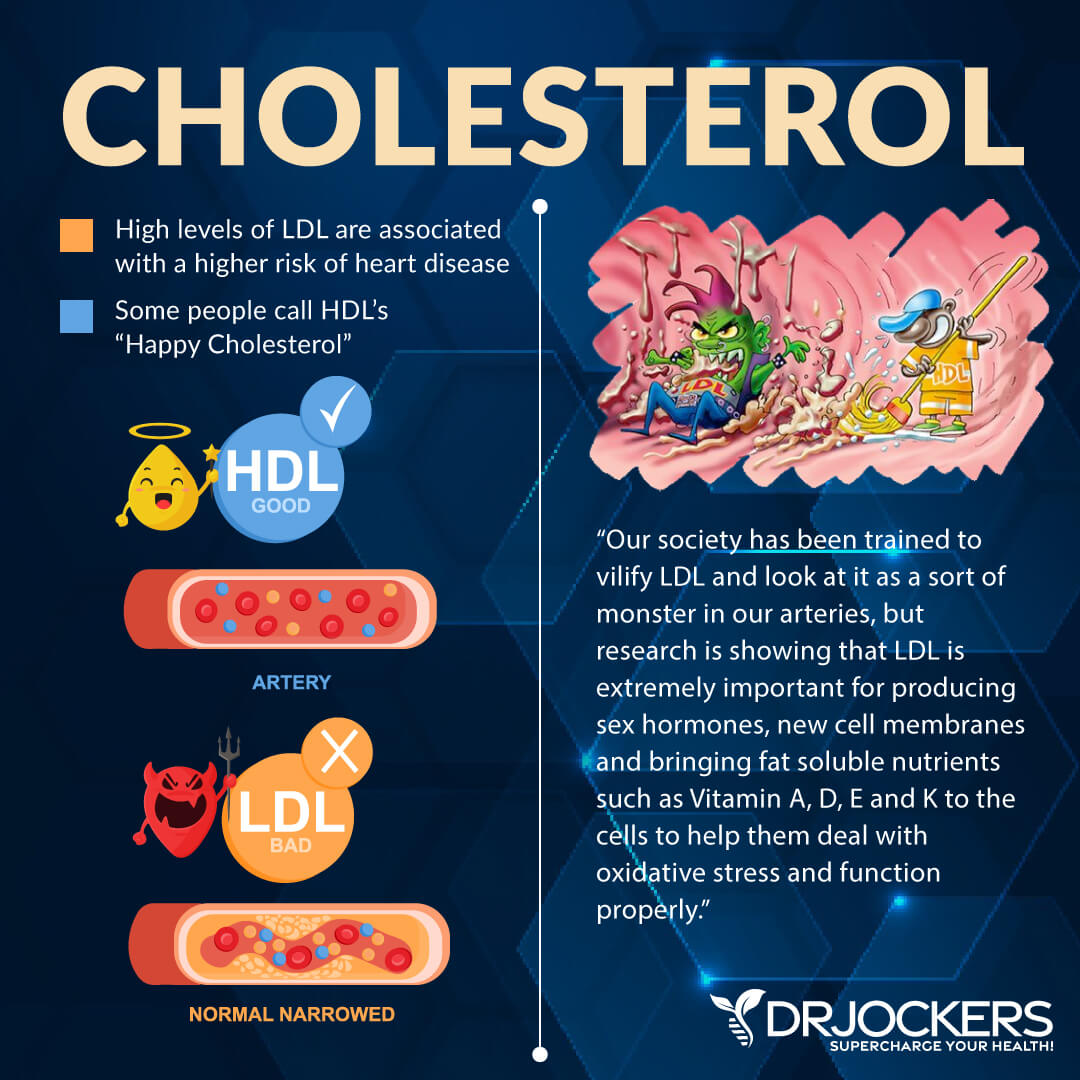

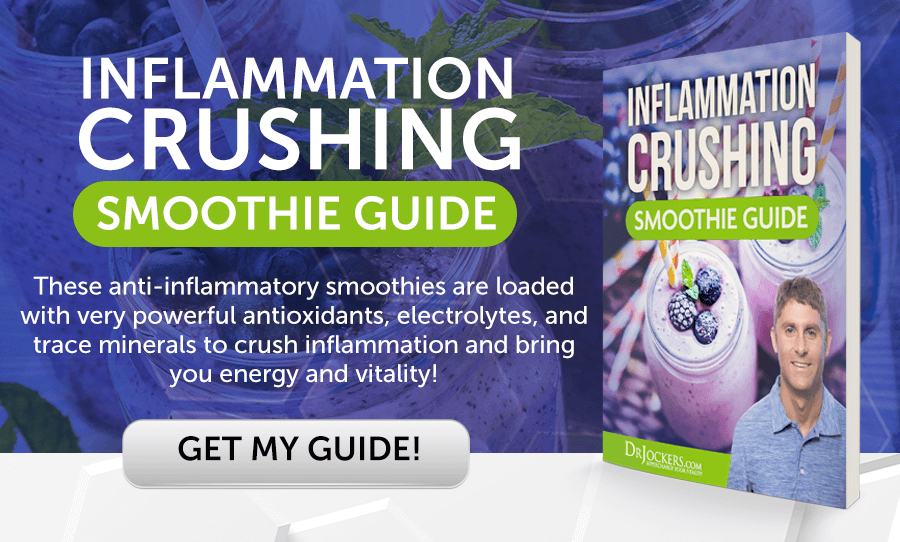


I wouldn’t touch an Oreo cookie, they have a Satanic symbol on them!
For sure, but be sure to read the article so you can understand the point we are making by reporting on this study.
Not related to this Oreo post. Have a question about Pearl Crop, Inc., in Stockton, CA. The almonds came from Pearl, but are given as Food Bank food stores. I tasted some. They dont taste normal. Is there a list anyone has taken to make of companies to avoid? I read independent journalists online and one story telling the latest ownership of Smithfield inc, (Chinese owned). This pork farm factory’s treatment of the pigs, and conditions are horrible. To get an advantage of the market they underpriced their pork which caused all the independent family farms to crash, and now they are the largest pork factory in our country. Sad when the farms of Americans go out of business in more ways than good safe food; lose heritage, and when people own and operate small farms, they work hard when their own name is on the product. Would love for us to hear more on this subject if thats possible, Dr Jockers. Thank you very much
how do I bring down my bad cholesterol without statins?